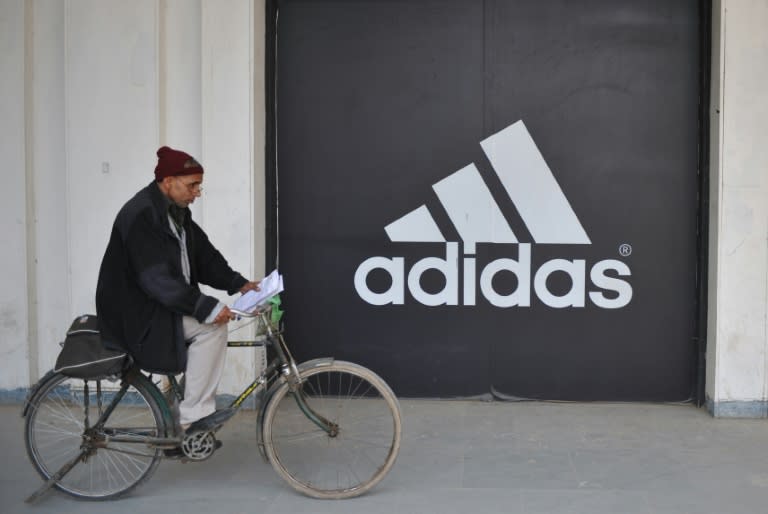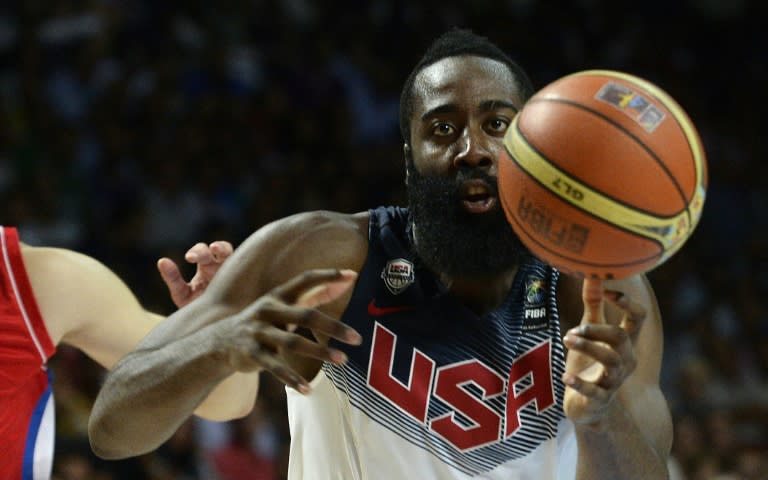Adidas takes new shot at US market with NBA Harden deal
NBA star James Harden will soon be dribbling the ball with Adidas sneakers on his feet as the German sportswear maker hopes to retake US market share from basketball giant Nike and number two Under Armour. Signing up the Houston Rockets guard in a reported 13-year, $200 million (180 million euro) deal aims to make Adidas trendy in a market where it has been caught flat-footed before. Charismatic Harden, 25, known as "The Beard" to his fans and voted the NBA's second best player last season, will switch from Nike to wear Adidas shoes on the court, and its gear in social settings, from October. Adidas has stayed quiet about the sum reported by ESPN, but confirms it is taking a big bet on basketball. "His connection with the fans is unique and unprecedented," an Adidas spokesman told AFP, noting that the salary will be linked to athletic performance. "He can take the game and our brand to new heights." In a market where teenagers love custom sneakers, Adidas is taking on number one Nike, which already sponsors superstars LeBron James, Kevin Durant and Kobe Bryant. "Adidas is changing its marketing strategy," said Cedric Rossi, an analyst at investment bank Bryan Garnier. "It no longer sponsors the NBA league, but it is backing a few key players ... Consumers associate and identify with these stars much more easily." Nike will, meanwhile, take over from Adidas as NBA's official apparel supplier from the 2016-17 season. From then, Adidas will reallocate the $10 million a year it paid to the league to individual players, said Rossi, explaining the value of Harden's contract. "We must not forget that it is for about 13 years. In the end, he makes $15 million a year." - Autonomy in the US – Adidas pulled out its chequebook because the stakes are high for CEO Herbert Hainer, who is under pressure from shareholders. The sportswear maker was relegated last year to number three rank in the US market, behind newcomer Under Armour. Adidas, a giant in football-obsessed Germany, presented a new strategy in March for the market across the Atlantic. "The United States has always been a problem," even in the time of Robert Louis-Dreyfus, its former chief, recalls an ex-company executive. "The view of Adidas has always been a European vision on the US market ... We never allowed the US to work as entrepreneurs." He said this could have included adapting its marketing strategy and, for example, investing in university sports. The company's previous costly mistakes, made from its headquarters in Herzogenaurach in southern Germany, have included declining in 1984 to sign up Michael Jordan, then a rising star, the former executive said. Adidas has also had trouble with the integration of Reebok, acquired in 2005 in a deal that is just starting to bear fruit in the fitness sector. The German company has started to shift course and in 2014 brought in American Mark King as head of the North America region. Product design is now done in the United States, and King has a free hand in marketing campaigns, with plans to sponsor 500 athletes from American football and baseball. "The American subsidiary gained independence and it was essential," said Rossi, who said Adidas made "the right steps" in the US, where sales rose three percent in this year's first half. "Now we expect a growth in turnover."




